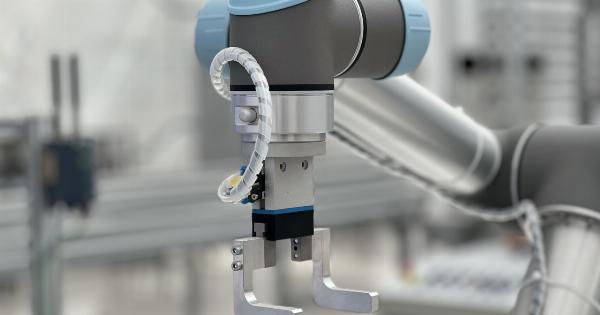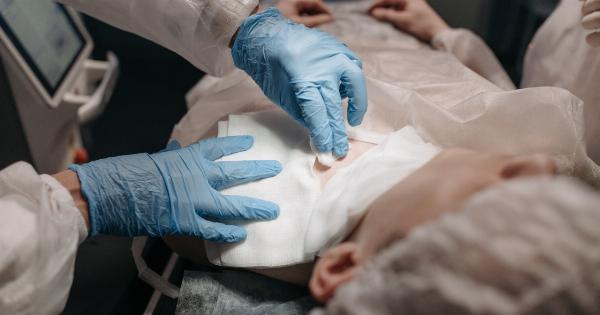Fractures and broken bones are common injuries that can significantly impact a person’s quality of life.
Traditional methods of treating fractures, such as casting or surgery, have been effective in many cases, but advancements in medical technology have paved the way for innovative approaches. Metropolitan General, a leading healthcare institution, has recently introduced an innovative treatment called transdermal fracture osteosynthesis, revolutionizing the way fractures are managed.
What is Transdermal Fracture Osteosynthesis?
Transdermal fracture osteosynthesis involves the use of implants placed under the skin to stabilize fractures.
Unlike traditional methods, which require invasive surgery and extensive incisions, transdermal osteosynthesis is performed through minimal incisions or punctures. The implants, usually made of metal, are inserted beneath the skin and attached to the fractured bone to provide stability and support during the healing process.
The Advantages of Transdermal Fracture Osteosynthesis
Transdermal fracture osteosynthesis offers several advantages over traditional fracture treatments:.
- Minimally invasive: The procedure requires minimal incisions or punctures, reducing the risk of infection and improving patient comfort. It also leads to smaller scars and faster healing.
- Rapid recovery: Patients undergoing transdermal fracture osteosynthesis typically experience faster recovery times compared to traditional methods. This is because the procedure is less traumatic to the surrounding tissues and bone.
- Better preservation of bone: Traditional surgeries often necessitate the removal of healthy bone tissue to access and stabilize the fracture. With transdermal osteosynthesis, there is minimal disruption to healthy bone, enabling better preservation of the patient’s natural anatomy.
- Early mobilization: Transdermal osteosynthesis allows for early mobilization and physical therapy. Patients can engage in gentle exercises sooner, promoting better joint function and preventing muscle atrophy.
- Improved patient satisfaction: The minimally invasive nature of transdermal osteosynthesis, along with the benefits of quicker recovery and smaller scars, contributes to higher patient satisfaction rates.
Indications for Transdermal Fracture Osteosynthesis
Transdermal fracture osteosynthesis is appropriate for a variety of fractures, including:.
- Simple fractures
- Comminuted fractures (those with multiple fragments)
- Stable fractures
- Fractures near joints
- Fractures in elderly patients with reduced bone quality
However, more complex fractures and cases involving extensive soft tissue damage may still warrant traditional surgical intervention.
Procedure and Recovery
The transdermal fracture osteosynthesis procedure at Metropolitan General typically involves the following steps:.
- Preoperative planning: The orthopedic surgeon carefully evaluates the fracture site using imaging techniques to determine the appropriate implants and surgical approach.
- Anesthesia: The patient is typically placed under regional or general anesthesia, ensuring their comfort throughout the procedure.
- Implant insertion: The surgeon makes minimal incisions or punctures near the fracture site and inserts the implants beneath the skin. The number and placement of implants depend on the nature and location of the fracture.
- Stabilization and closure: Once the implants are in position, the surgeon stabilizes the fracture by attaching the implants to the fractured bone. The incisions or puncture sites are then closed with sutures or adhesive strips.
- Postoperative care: Patients are typically discharged on the same day or the following day, with specific instructions for postoperative care and rehabilitation. Regular follow-up visits are scheduled to monitor the healing process and remove any sutures if necessary.
The recovery period varies depending on the individual and the extent of their fracture.
Generally, patients can expect a quicker recovery compared to traditional methods, with early mobilization and gradual return to normal activities under the guidance of a healthcare professional.
Conclusion
Metropolitan General’s introduction of transdermal fracture osteosynthesis represents a significant advancement in the field of fracture management.
This innovative technique offers numerous benefits, including minimal invasiveness, faster recovery times, improved bone preservation, and greater patient satisfaction. While not suitable for all fracture cases, transdermal fracture osteosynthesis provides an excellent alternative to traditional surgical methods in appropriate situations.
With the expertise of the healthcare professionals at Metropolitan General, patients can enjoy improved outcomes and quicker restoration of their overall quality of life.

























